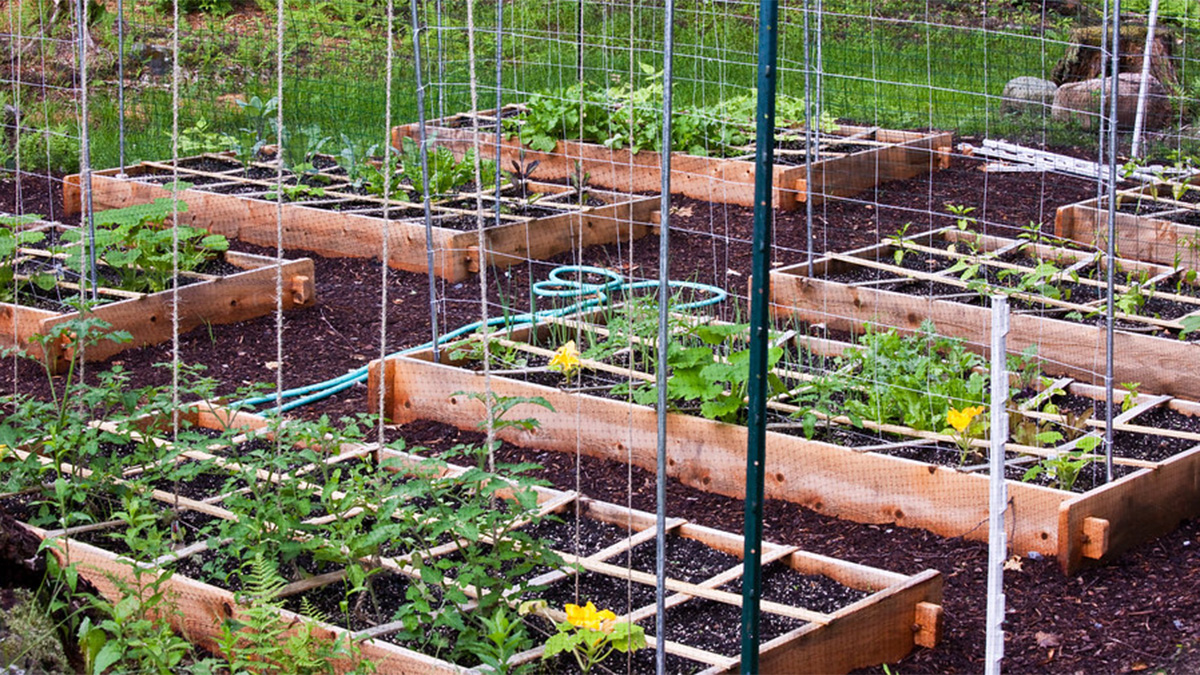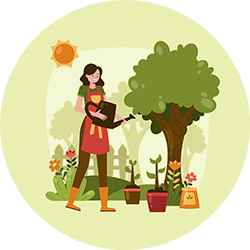Which Plants Grow Best Together in a Square Foot Garden?

Companion planting is a smart way to get the most out of your square foot garden. By choosing plants that support each other, you can boost yields, deter pests, and make the most of every inch. Whether you’re fine-tuning your layout or looking for new pairings to try, this guide will help you match the right plants together for a healthier, more productive garden.
Related: Discover How You Can Grow More with Less Effort Using Square Foot Gardening
Understanding companion planting in square foot gardening
Companion planting is the practice of growing certain plants close together for mutual benefit. In a square foot garden, this technique is especially useful because space is limited and every inch counts. Good plant pairings can lead to better pest control, improved growth, and more productive harvests.
Some plants support each other by enhancing soil nutrients, deterring pests, or attracting beneficial insects. When used intentionally, companion planting can increase yields without using chemicals. It also allows gardeners to create more diverse and balanced planting blocks.
Best companion plant combinations for vegetables
Tomatoes grow well with basil, which is believed to enhance tomato flavor and repel pests like aphids and whiteflies. Marigolds planted near tomatoes help deter nematodes and add color to your garden. Carrots can also be tucked into tomato squares since their root growth complements tomato foliage.
Cucumbers pair well with radishes, which help deter cucumber beetles. Nasturtiums are another great companion for cucumbers, acting as a trap crop for aphids and beetles. These combinations work well in one-foot squares or by pairing adjacent blocks.
Lettuce does well when planted next to carrots or onions. Carrots have narrow leaves that don’t shade the lettuce, while onions help repel pests. Peppers enjoy the company of spinach or basil, both of which thrive in similar light and soil conditions.
Beans are classic companions for corn or squash. Although the full “Three Sisters” setup is better suited to larger beds, a modified version can still work in square foot gardening by using mini trellises and low-growing squash varieties.
Pairing herbs and vegetables
Basil is a versatile companion for tomatoes, helping repel insects and possibly improving growth. Dill works well with cabbage family crops like broccoli or kale but should be avoided near carrots, as it can stunt their growth.
Chives pair nicely with carrots and lettuce, helping repel aphids and enhancing flavor. Their compact growth makes them easy to fit into small blocks. Herbs like mint and oregano are best kept in separate containers nearby, as they tend to spread aggressively and crowd out neighbors.
Some herbs, such as fennel, should be avoided in square foot gardens entirely. Fennel tends to inhibit the growth of many nearby vegetables and doesn’t make a good companion for most crops.
Flowers that support your square foot garden
Marigolds are one of the best flowers to grow in a vegetable garden. They repel a wide range of pests, including nematodes, aphids, and whiteflies. Their compact size allows them to fit into one square without crowding.
Nasturtiums are great for luring aphids and beetles away from your vegetables. They also attract pollinators, which can increase yields for flowering crops. Plant them on the edges of your grid or in dedicated corners for best results.
Calendula is another beneficial flower that pairs well with leafy greens. Its sticky resin traps insects, and its blooms attract pollinators. Flowers can be easily rotated between squares with herbs or lettuce throughout the season.
Crops that should not be planted together
Some plant combinations simply don’t work well in tight quarters. For example, onions and beans are considered incompatible because onions can stunt bean growth. Instead, plant beans with corn or cucumbers.
Tomatoes and corn are also a poor match. Both are heavy feeders and compete for nutrients, and corn attracts pests like the tomato fruitworm. A better companion for tomatoes would be carrots or basil.
Cabbage family crops like broccoli and kale should not be planted near strawberries or tomatoes, as they may compete or encourage disease. Keeping track of these combinations helps you make better use of your limited space.
Planning your square foot layout for companion planting
Start by placing tall plants like tomatoes or corn on the north side of your bed to prevent shading smaller crops. Then use adjacent squares for their compatible partners, such as basil or carrots. This ensures each plant has enough light and airflow.
Balance sun-loving crops with those that tolerate partial shade. For example, lettuce can be planted in the shadow of taller peppers or beans. Think of each square as a mini ecosystem with cooperative neighbors.
Crop rotation is important in small gardens to reduce soil depletion and limit pests. Keep a simple diagram or notebook to track where you plant each crop year to year. This makes it easier to plan changes for the next season.
Final tips for companion planting success
Keep a garden journal to record what combinations worked well and which didn’t. Over time, this personal experience is just as valuable as any chart. Note any pest problems or yield differences to refine your future planting plans.
Don’t be afraid to experiment with new combinations, especially flowers and herbs. Square foot gardening allows for flexibility, and small adjustments can make a big difference.
Lastly, avoid overcrowding your squares. It’s tempting to pack in as much as possible, but proper spacing ensures better airflow, less disease, and stronger plants.
Conclusion
Pairing the right plants in your square foot garden can lead to better harvests and fewer headaches. With a little planning and observation, companion planting becomes a simple and rewarding part of your gardening routine. Use these suggestions as a starting point and adjust each season to find what works best in your space.
